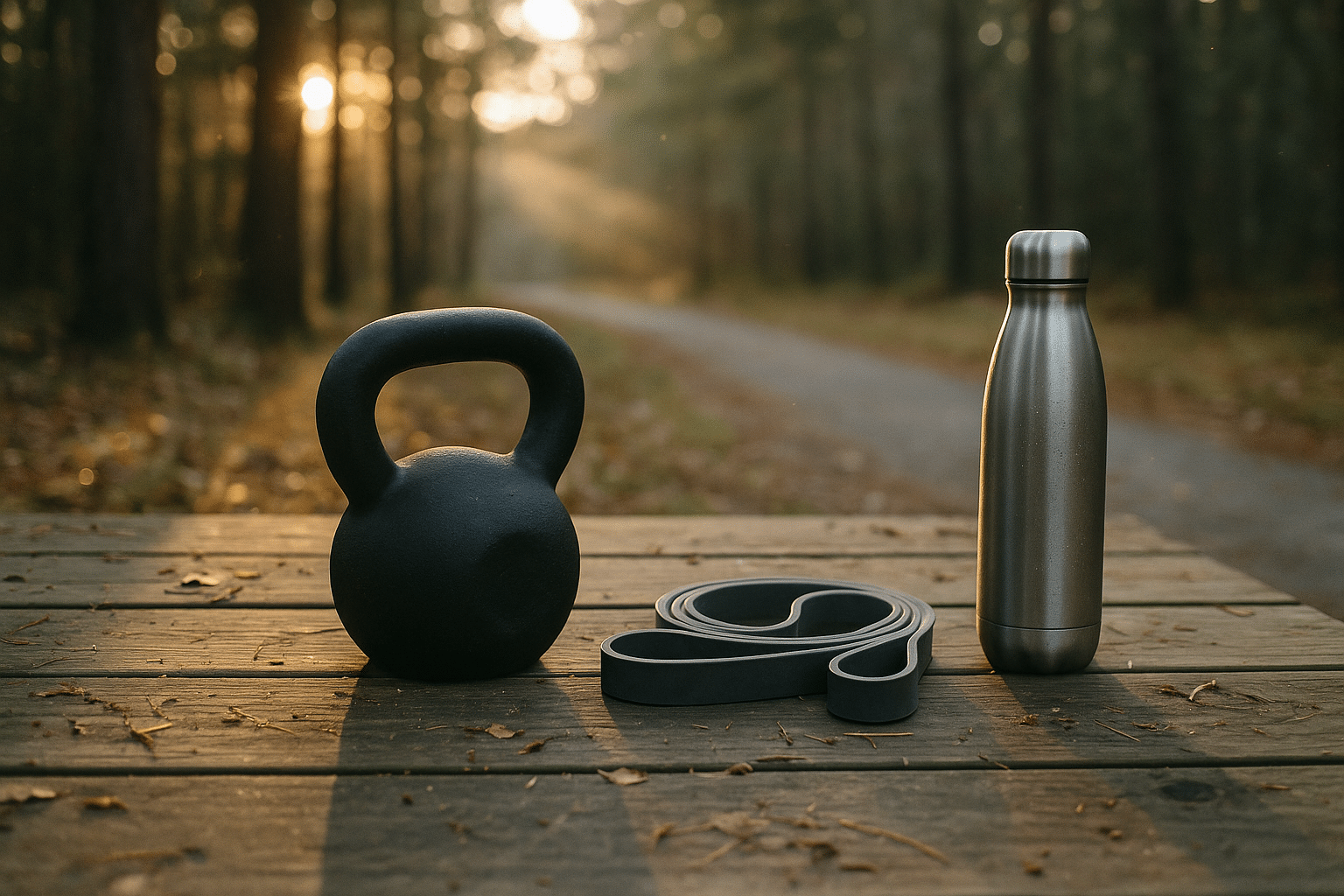
Explore the world of swimming
Swimming is both a skill and a lifelong passport to health, freedom of movement, and confidence around water. Whether you are easing into your first lap or refining your stroke for faster splits, swimming meets you where you are. It engages the entire body without hammering the joints, improves heart and lung function, and opens doors to adventure in pools, lakes, rivers, and seas. In a noisy world, a lane can feel like a quiet corridor where focus becomes simple and breath becomes rhythm.
Outline:
– The health science of swimming and why water is a uniquely supportive training medium
– Technique fundamentals for the four primary strokes and the hydrodynamics behind efficiency
– Practical training plans, drills, and progression for beginners to experienced swimmers
– Safety, gear, and environments: from chlorine and currents to visibility and cold
– Lifelong swimming and conclusion: pathways for kids, adults returning to fitness, and active aging
The Health Science of Swimming: Cardio, Muscles, and the Moving Medium
Water changes the rules of movement. Because water is roughly 800 times denser than air, it provides continuous resistance in every direction. That resistance, combined with buoyancy that supports a significant portion of body weight, makes swimming a rare blend: it is challenging for the heart and lungs yet gentle on joints. In chest-deep water, effective load on the lower limbs can drop by well over half, and near the neck it falls dramatically. The result is an activity that invites intensity without the same pounding forces associated with many land-based workouts.
From a metabolic standpoint, swimming spans a wide spectrum. Exercise scientists describe intensity with metabolic equivalents (METs). Moderate-paced freestyle often lands around 6–8 METs, while vigorous sets can exceed 10 METs. For a 70 kg swimmer, that translates to an approximate energy expenditure of roughly 400–750 kcal per hour depending on pace and efficiency. As technique improves, speed rises at the same effort because better body position and a cleaner stroke reduce drag. This is one of swimming’s rewards: practice literally makes movement through water easier.
Physiologically, swimming engages multiple systems at once:
– Cardiovascular: Interval sets elevate heart rate and stroke volume, supporting endurance and daily energy.
– Respiratory: Rhythmic breath control during strokes improves ventilation efficiency and tolerance to CO2.
– Musculoskeletal: Shoulders, back, core, hips, and legs share the workload, distributing stress rather than concentrating it.
– Neuromuscular coordination: Timing the catch, pull, kick, and rotation builds movement literacy and balance.
Injury patterns differ from land sports. Impact injuries are uncommon, but overuse of the shoulder complex can surface when volume or intensity ramps up faster than tissue adapts. Survey-based samples often report notable rates of shoulder discomfort among high-volume lap swimmers. Fortunately, attention to technique (especially hand entry and early vertical forearm), balanced strength work for rotator cuff and scapular stabilizers, and gradual progression mitigate the risk. For those managing joint irritation from running or court sports, swimming serves as an alternative training engine or a cross-training anchor during recovery.
Finally, there is the mind. Submerged sound softens, and breathing marks time like a metronome. Many swimmers describe mood benefits after even short sessions, consistent with broader findings that regular aerobic activity supports stress regulation and sleep quality. If fitness sometimes feels like a chore, water can make it feel like a ritual.
Technique and Strokes: Freestyle, Backstroke, Breaststroke, and Butterfly
Technique is the quiet multiplier in swimming. Because drag rises quickly with speed, small improvements in alignment and timing can deliver outsized gains. Think of your body as a long vessel: the narrower and more stable it rides, the easier it slips through water. Three primary forms of drag matter here: form drag (caused by shape), wave drag (from surfaces you create), and frictional drag (from water sliding along your skin and suit). Technique aims to reduce the first two while managing the third.
Freestyle (front crawl) rewards a long, balanced line. Key ideas include:
– Head neutral with waterline between crown and forehead; eyes down or slightly forward.
– Hips and heels close to the surface; a gentle, steady kick that stabilizes rotation rather than thrashes.
– Early vertical forearm in the catch to press water backward, not downward.
– Exhale underwater; roll to inhale, keeping one goggle in the water to avoid excessive lift.
Backstroke mirrors freestyle on the posterior chain. The torso rotates around a stable axis, and a close-to-straight arm recovery slices the air. Avoid over-bending the knee in the kick; power comes from the hip with a relaxed ankle. Backstroke is a valuable counterbalance for posture, opening the chest and training scapular control.
Breaststroke is about timing and streamlining. The sequence is pull, breathe, kick, glide. After the kick snaps together, hold a brief glide to capitalize on speed before beginning the next pull. Common pitfalls include flaring the knees too wide and lifting the head too high for breath. Efficient breaststroke can be surprisingly gentle on the shoulders when the pull remains compact and the head stays in line.
Butterfly demands rhythm. The undulation begins at the chest and flows through the hips, with a two-beat kick coordinating the arm cycle. Power arrives from anchoring the forearms and pressing water back as the body surges forward. Many swimmers find that reducing amplitude and focusing on timing makes butterfly sustainable for sets, not just sprints.
Speed benchmarks vary, but for context:
– Skilled sprint freestylers can exceed 2.0 m/s over short distances.
– Distance-oriented pool speeds often sit near 1.4–1.7 m/s for trained athletes.
– Developing swimmers frequently cruise between 0.7–1.2 m/s, with rapid gains as technique improves.
Common errors and quick fixes:
– Dropped hips: Press the chest slightly and engage the core; think “long spine, light legs.”
– Crossing over at entry: Aim the hand to 11 and 1 o’clock rather than the center line.
– Breath lift: Roll to breathe rather than lifting the head; the water should part quietly.
– Overkicking: Trade big, splashy kicks for compact kicks driven from the hips.
In water, economy is everything. The stroke that feels smooth and quiet is usually the one that is fastest at a given effort.
Training Plans and Skill Progression: From First Lap to Confident Sets
A good swim plan knits together purpose, progression, and patience. The structure below scales from newcomers to experienced swimmers. Anchor your sessions with a clear intent: technique refinement, aerobic endurance, speed development, or recovery.
Guiding principles:
– Frequency beats heroics: Two to four short sessions per week outperform a single marathon workout for most people.
– Progress one variable at a time: First consistency, then volume, then intensity.
– Keep technique at the center: One or two focal cues per set to avoid “thinking about everything.”
Sample microcycle for a developing swimmer (about 3 sessions, 45–60 minutes):
– Session A (Technique + Aerobic): Easy warm-up, 8–12 x 25 m drill/swim by 25, 6–10 x 100 m aerobic with 15–30 s rest, easy cool-down.
– Session B (Speed + Skills): Warm-up, 8 x 25 m builds, 12–16 x 50 m at moderate-hard with full technical focus, 4 x 25 m fast with generous rest, cool-down with choice stroke.
– Session C (Endurance): Warm-up, 1–3 x 400 m steady or 8–12 x 100 m steady, optional pull buoy set to change stimulus, cool-down.
Drills to target common needs:
– Catch-up or ¾ catch-up to improve timing and body line.
– Sculling at the front quadrant for better feel of the water.
– Fingertip drag during recovery to encourage relaxed, high-elbow mechanics.
– Single-arm freestyle with a flutter kickboard for balance and breath control.
Intensity can be guided by perceived exertion (a simple 1–10 scale) or pace goals. Early on, aim for conversational aerobic sets at roughly 4–6 out of 10. Sprinkle in short sprints at 8–9 out of 10 to recruit speed without fatigue spillover. As fitness grows, introduce threshold-style repeats (for example, 6–10 x 100 m on a send-off that gives 5–10 s rest) to nudge endurance while keeping form intact.
Strength and mobility support the water work. Two short dryland sessions per week can go far:
– Shoulder prehab: external rotations, Y-T-W raises, serratus presses.
– Core: dead bugs, planks, anti-rotation presses.
– Hips: glute bridges, hip airplanes, single-leg Romanian deadlifts.
– Ankles: gentle plantar flexion work and calf mobility for a more efficient kick.
Measuring progress can be as simple as tracking a favorite set monthly (for example, 10 x 100 m aerobic, noting average pace and how it felt). Equally important, reflect on qualitative cues: Was the stroke quiet? Did breathing feel unhurried? In swimming, how it feels often predicts how fast it will become.
Safety, Gear, and Environments: From Pool Chemistry to Open-Water Calm
Safety begins with planning. Pools offer a controlled setting with lifeguards, lane lines, and predictable conditions. Open water introduces currents, wind, waves, variable visibility, and temperature shifts. Both environments reward a “safety-first” checklist and a modest margin for the unexpected.
Pool considerations:
– Water balance: Many facilities maintain pH near 7.2–7.8 and disinfectant levels in a narrow target range to keep water clear and comfortable.
– Hygiene habits: Rinse before and after swimming to reduce skin and eye irritation; hydrate even if you do not feel sweaty.
– Lane etiquette: Keep right or circle-swim as posted; communicate rest plans with lane mates; push off with awareness.
Open-water essentials:
– Conditions: Check wind, waves, tide or current forecasts, and water temperature. Even small onshore winds can stack chop against your breathing side.
– Sighting: Every 6–10 strokes, lift the eyes just enough to spot a landmark; combine with a breath to minimize drag.
– Safety equipment: A bright tow float for visibility, a cap suited to water temperature, and if appropriate, a thermal layer. Choose routes close to shorelines when possible.
– Rip currents: If caught, stay calm, float to settle breathing, then swim parallel to shore until the flow eases.
Cold water demands respect. A useful rule of thumb notes that the first minute may be dominated by cold shock, when controlling breath is the only priority. The next several minutes allow meaningful movement, but dexterity and decision-making can wane. Plan short entries, exit paths, and warm layers on shore. In any temperature, swim with others when possible, notify someone on land of your route and duration, and carry a whistle if allowed at your venue.
Gear should serve technique, not overshadow it. Thoughtful choices include:
– Goggles: Clear lenses for indoor or low-light, tinted or mirrored for bright conditions; prioritize a leak-free seal without excessive strap tension.
– Caps: Silicone for durability and warmth, latex for breathability; double up in colder water.
– Tools: Pull buoy for body-line awareness, kickboard for focused kicking, paddles sparingly for feel and strength (avoid if they provoke shoulder discomfort), short fins for ankle mobility and rhythm.
Environmental stewardship matters. Rinse gear to prolong life and reduce chemical residues, avoid fragile shore vegetation when entering natural waters, and respect local guidelines for wildlife and water quality. A small courtesy—like packing out a stray bit of litter—helps keep favorite coves and lanes welcoming for everyone.
Lifelong Swimming and Conclusion: Pathways for Every Stage
Swimming adapts gracefully across ages and goals. For young learners, early water familiarity centers on safety and enjoyment. Gentle entries, games that build breath control, and supervised exploration establish trust in the water. Skills grow from floating to basic propulsion, and eventually to stroke mechanics. The aim is not early specialization but comfort, curiosity, and confidence.
Adults often arrive with a blend of motivation and hesitation. The good news: adults can learn efficiently, particularly when focusing on body position and breath rhythm before speed. Consider short, frequent sessions that end on a positive note. Many adults benefit from:
– Two to three drills per workout paired immediately with easy swimming to “lock in” the feeling.
– Process goals such as “quiet kick” or “steady exhale,” rather than pace targets, for the first month.
– Occasional video review or feedback from an experienced instructor to spot blind angles.
For those returning to fitness or managing joint sensitivity, swimming offers a supportive platform. Aqua jogging and gentle kick sets can bridge gaps on days when impact does not appeal. As base fitness returns, adding short, crisp efforts (for example, 8 x 25 m fast with lots of rest) rekindles speed while keeping total stress reasonable.
Older adults often find swimming sustains mobility, balance, and social connection. The combination of resistance and buoyancy supports muscle maintenance without amplifying soreness. Many community pools host group sessions that fold exercise into routine and camaraderie. Thoughtful progressions and simple strength work—especially for the shoulders and hips—help keep the experience comfortable and consistent.
In special situations such as pregnancy or chronic conditions, individualized guidance is important. When cleared for activity, many find that the controlled environment of a pool and the ability to modulate effort by set and stroke make swimming an approachable, self-paced option. Adaptive tools and inclusive programs increasingly open doors for people with disabilities, emphasizing safety, autonomy, and joy in movement.
As a practical conclusion, choose a path aligned with your starting point:
– New to the water: Aim for 2–3 sessions per week of 20–30 minutes, emphasizing breath and body line.
– Comfortable but inconsistent: Build a four-week block with one technique day, one aerobic day, and one mixed day.
– Performance-oriented: Periodize eight to twelve weeks with threshold development, then sharpen with race-pace intervals, always preserving technical quality.
Water rewards patience. Start with the simplest cues—long, balanced, and calm—and let consistency do the heavy lifting. In time, the pool or the open-water horizon becomes more than a place to exercise; it becomes a place to think clearly, to feel capable, and to carry that feeling into the rest of life.


